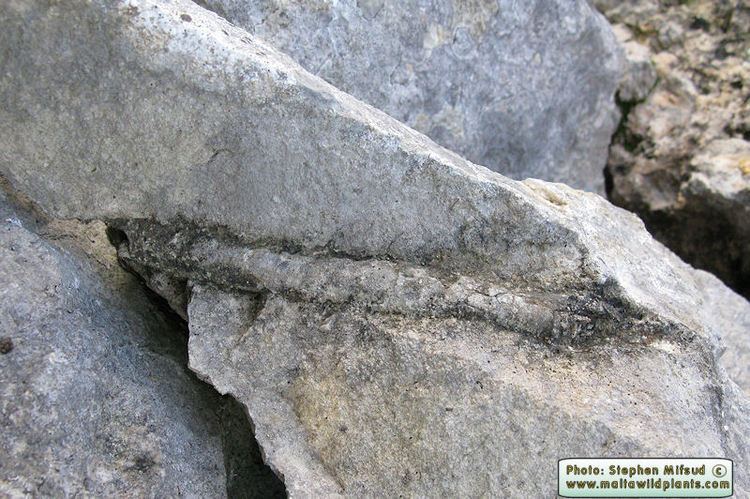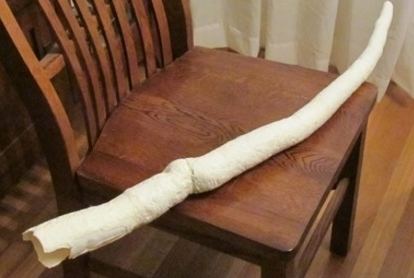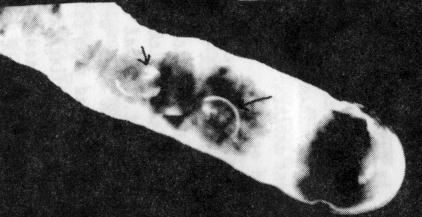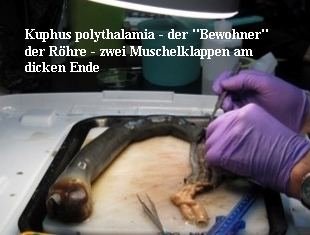Family Teredinidae Phylum Mollusca Order Myoida | Species K. polythalamia Rank Genus | |
 | ||
Similar Nototeredo, Lyrodus, Myoida, Shipworms, Teredo | ||
Kuphus is a genus of shipworms, marine bivalve molluscs in the family Teredinidae. There are two extinct species in the genus, Kuphus incrassatus and Kuphus fistula. The only extant species is Kuphus polythalamia, the longest bivalve mollusc in the world.
Contents
- Taxonomy
- Fossil species
- Misidentification as dinosaur remains
- Kuphus polythalamia
- Distribution
- Longest bivalve
- References

Members of this genus secrete calcareous tubes. Based only on the calcareous tube, this species was thought by Linnaeus to be a tube worm, so he placed it in the genus Serpula. Despite the fact that Kuphus polythalamia is now known to be a mollusc, its common name is the giant tube worm. Since 1981 however, the name "giant tube worm" has also been applied to the hydrothermal vent species Riftia pachyptila, which is indeed a worm, an annelid.

Taxonomy

Large, tusk-shaped, calcareous tubes were occasionally washed up on beaches. There was disagreement among zoologists in the 18th century as to whether the creature which made one of these was a polychaete tube-worm or came from a completely different phylum, the molluscs. Linnaeus described the species in 1758. He considered that it was a serpulid worm and named it Serpula arenaria, a name which in 1767 he changed to Serpula polythalamia. There was some confusion as to precisely which taxon he was describing, but S. polythalamia became the type species of the genus Serpula, a genus of polychaete worms. In 1770, Guettard introduced the name Kuphus for the genus, realising that the animal was not a worm but a mollusc. This meant that, according to the ICZN rules, the specific name became Kuphus polythalamia (Linnaeus, 1758).
Fossil species

Fossils of Kuphus polythalamia have been found dating back to the Oligocene. They came from rocks in various tropical and sub-tropical areas including Indonesia, Pakistan, Jamaica, Grenada, South Africa and Somalia.

Fossils of the extinct species, Kuphus incrassatus, have been found in rocks in Jamaica, Mexico, Panama, Puerto Rico, Trinidad and Tobago, Florida and Mississippiand. The other species is "Kuphus arenarius" that have been recorded in limestone layers of Asmari Formation (Oligocene-Miocene)in Iran . They are common in sedimentary Tertiary rocks in the Caribbean region. They date back to the Oligocene and Miocene and have been used for absolute dating of the rocks, using the relative proportions of two strontium isotopes in the fossils.

Fossils of the extinct species, Kuphus fistula, dating from the Miocene and Pliocene, have been found in various locations in Virginia in the United States.
Misidentification as dinosaur remains
Fossils found near Warsaw by paleontologist, Friedrich von Huene in 1941 were misidentified as being the teeth and parts of the jaw of a new species of dinosaur, which he named Succinodon putzeri. It was later determined that these were in fact the fossil remains of a marine boring bivalve, a previously undescribed species of Kuphus.
Kuphus polythalamia
The tube of Kuphus polythalamia is known as a crypt and is a calcareous secretion designed to enable the animal to live in its preferred habitat, the mud of mangrove swamps. A typical specimen measures 40 inches (1,000 mm) in length and is shaped like a truncated elephant's tusk. The wider, anterior end is closed, has a rounded tip, and is about 4.5 inches (110 mm) in diameter. From there the tube tapers to an open, posterior end about 1.5 inches (38 mm) in diameter, with a central septum. Siphons project through this end for feeding and respiration. They can be withdrawn inside the tube and the end can be sealed with a set of specialised plates or "pallets". The two small valves of the mollusc are inside the tube along with the mantle, gut and other soft organs. In the intact but otherwise empty tube found on the strandline, they can be seen by X-ray photography.
Marine biologist Ruth Turner studied shipworms and considered that their common ancestor would have been very like Kuphus polythalamia, the most primitive of the teredinids. She believed that the anatomy of the tube was such that the animal would not have been able to burrow in wood as other modern teredinids do, but would instead have lived buried in soft sediments.
Distribution
Kuphus polythalamia is found in the western Pacific Ocean, the eastern Indian Ocean and the Indo-Malaysian area. The range includes the Philippines, Sumatra and Mozambique.
Longest bivalve
The giant clam (Tridacna gigas) is generally considered to be the largest bivalve mollusc. It is indeed the heaviest species, growing to over 200 kilograms (440 lb) and measuring up to 120 centimetres (47 in) in length, but Kuphus polythalamia holds the record for the largest bivalve by length. A specimen owned by Victor Dan in the United States has a length of 1,532 millimetres (60.3 in), which is considerably longer than the largest giant clam.
